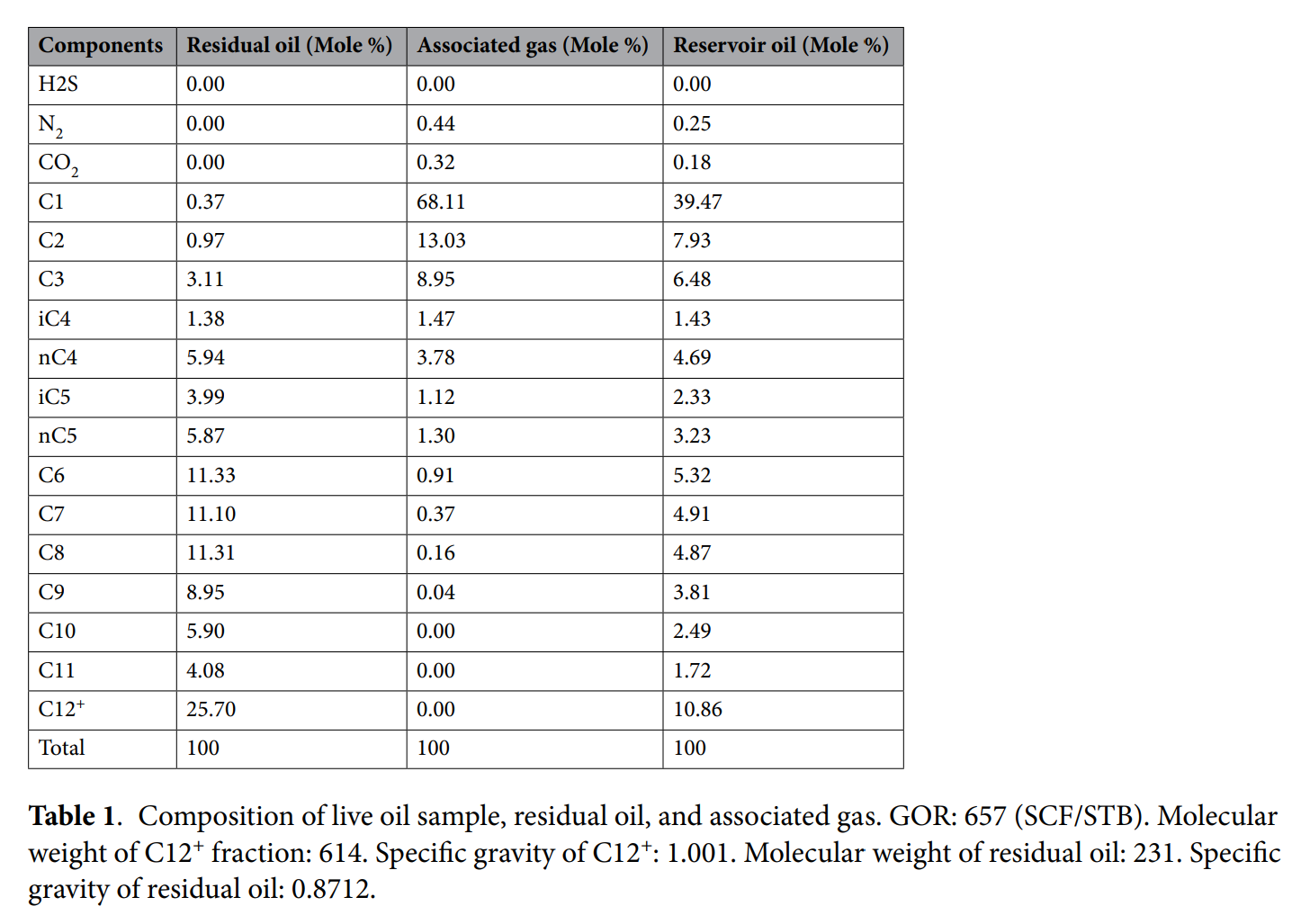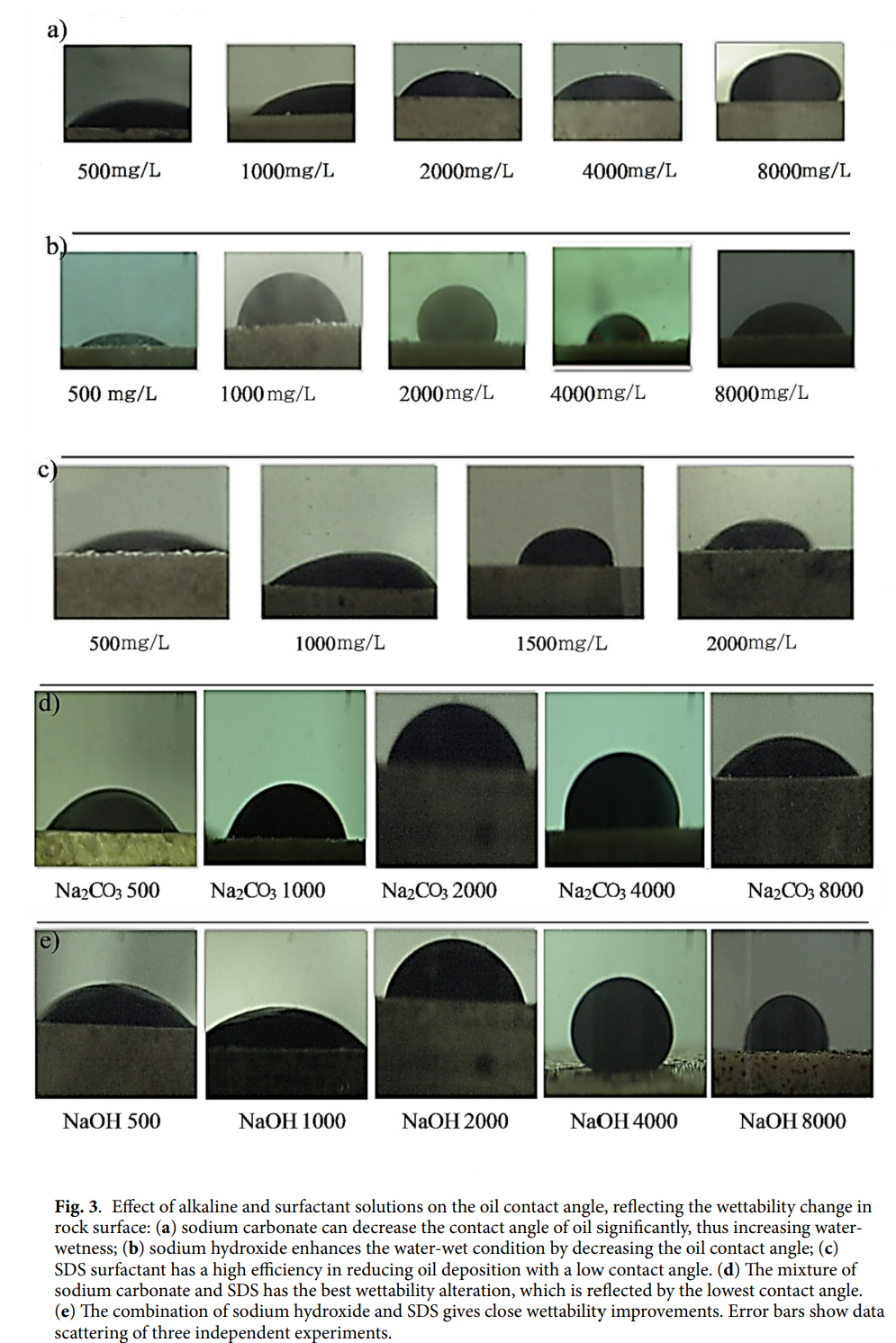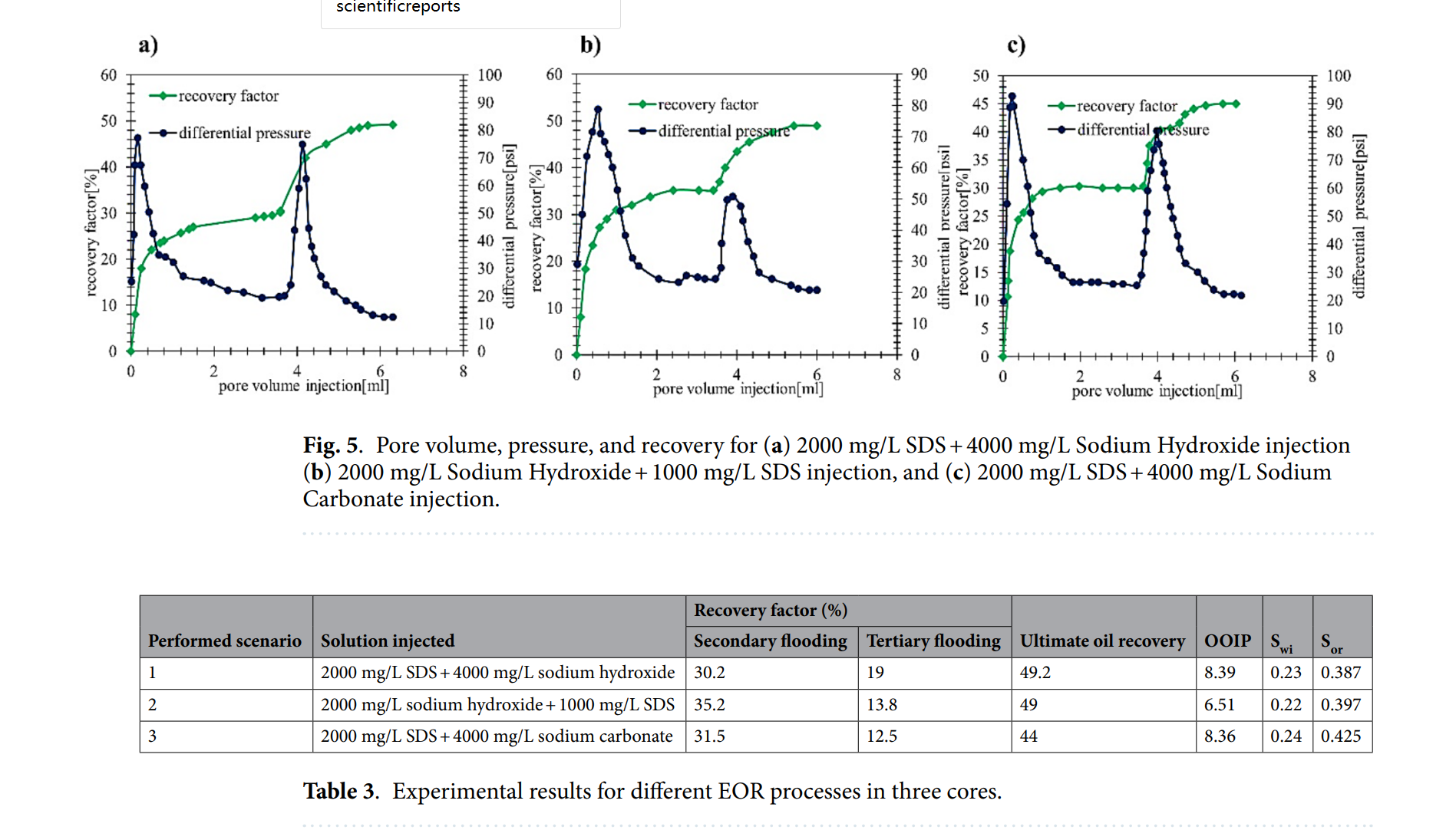A synergistic approach to enhanced oil recovery by combining insitu surfactant production and wettability alteration in carbonate reservoirs
在碳酸盐岩储层中,通过强碱在酸性油存在下水解产生阴离子表面活性剂,以防止表面活性剂值下降。同时,研究了碱性表面活性剂在三种碳酸盐岩中的界面张力降低机理以及润湿性变化。结果表明,通过增加两种碱(氢氧化钠和碳酸钠)的浓度,储层岩石的润湿性发生了变化。进一步提高碳酸钠浓度可使储层岩石的润湿性变为中性。将氢氧化钠浓度增加到2000 mg/L,可使储层岩石的润湿性从油湿变为水湿,从而通过使用最佳浓度的碱性表面活性剂在岩心驱替实验中提高采收率。通过岩心驱替模拟,利用钠氢氧化物和碳酸钠的碱性表面活性剂驱替,通过生产数据的历史拟合进行预测。
CMG软件应用情况
在实验过程中,作者使用了CMG STARS模拟器(版本2023.1)来模拟水和碱性表面活性剂驱替过程。模拟模型是水平构建的,包含两个垂直井(生产井和注入井),与实验设置一致。通过模拟,作者对实验结果进行了历史拟合,确定了水和油的相对渗透率的指数值,分别为3.8和2.1。模拟结果与实验结果吻合良好,验证了模拟的准确性。此外,模拟还用于研究不同注入方案在网格(10,3,2)中的界面张力变化情况,结果表明,2000 mg/L SDS + 4000 mg/L氢氧化钠方案在降低界面张力方面最为有效,这与实验中观察到的采收率提高结果一致。
结论
研究表明,碱性物质(氢氧化钠和碳酸钠)对岩石表面润湿性有显著影响,其中碳酸钠使润湿性呈下降趋势,且比氢氧化钠更易使岩石呈现水湿状态。向表面活性剂溶液中添加碱性物质会抑制其生产,导致胶束更快形成。此外,氢氧化钠作为一种更强的碱,因其水解能力对表面活性剂溶液产生了显著影响。研究发现,随着氢氧化钠浓度从500 mg/L增加到4000 mg/L,接触角从142°降低到33°,润湿性从油湿显著转变为水湿,但由于胶束形成,最终导致弱水湿状态。通过注入碱性表面活性剂并改变润湿性为水湿,从岩心样本中提高了石油采收率,并在后注入阶段稳定了采收率增长趋势。CMG-STARS模拟器被用于在碳酸盐岩岩心的笛卡尔空间中创建模型,并与实验结果进行对比,模拟结果与实验结果相匹配,通过历史拟合来验证这一点。为了使模拟器接近实验结果,需要对多个输入数据集进行修改。
作者单位
伊朗亚兹德大学采矿与冶金工程系




Abstract
A strong alkali was hydrolyzed in the presence of acidic oil to produce an anionic surfactant to prevent the decline in surfactant value. Also, sodium dodecyl sulfate (SDS) was considered the surfactant, and sodium hydroxide and sodium carbonate were the alkalis. We examined the mechanism of interfacial tension reduction with the alkaline-surfactant and wettability changes in three carbonate rocks. Moreover, the effect of alkaline surfactant on reservoir wettability was investigated by quantitative measurement of the static contact angle. Results showed that the wettability of the reservoir rocks changed by adding the concentration of two types of alkaline sodium hydroxide (NaOH) and sodium carbonate (Na2CO3) to the oil rock. In addition, further enhancement of the sodium-carbonate concentration altered the wettability of the reservoir rock to neutral. Increasing the concentration of sodium hydroxide up to 2000 mg/L led to the wettability alteration of the reservoir rock from oil-wet to strong water-wet and, consequently, to the promotion of oil recovery in the reservoir rocks by using the optimal concentration of alkaline surfactant in the core flooding experiments. Through the core flood simulation, the behavior of alkaline-surfactant flooding employing sodium hydroxide and sodium carbonate was predicted following the historical matching of production data. Keywords Alkaline-Surfactant flooding (ASF), Wettability alteration, Interfacial tension reduction, Carbonate wettability modification, Surfactant micelle formation
